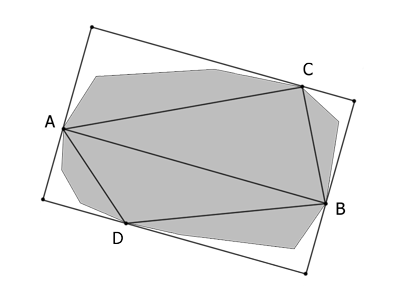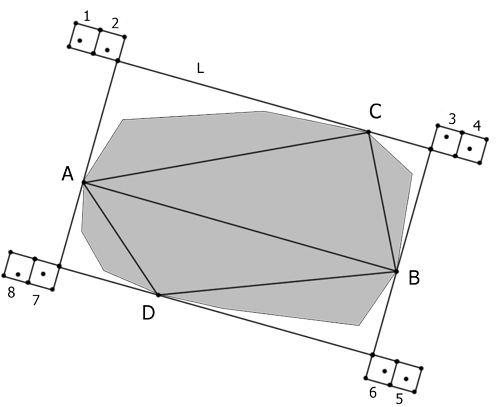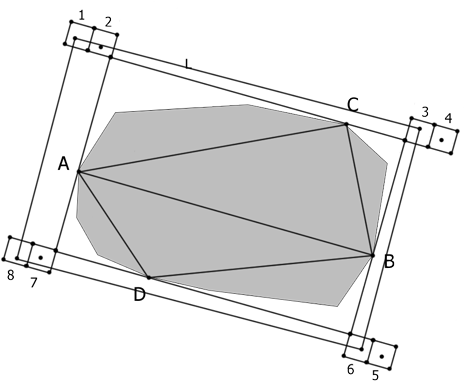In this solution we wanna describe an algorithm which the $\alpha$ described in the problem is near $2$ for many shapes.
First Step) Insert your shape in a parallelogram (not necessary with vertices in grid). In order to do this it's enough to take the segment $AB$ which is equal with diameter of the shape and take vertices $C$ and $D$ from the vertices of the main shape in both sides of $AB$ which every one has maximal distance from $AB$. Now the bellow rectangle is a parallelogram contains the main shape and its area is at most two times of the main shape (because of the convexity of the main shape).
$\hspace{3.3cm}$
Second Step) Now it's enough to find a parallelogram with vertices from the grid which is near the drawn rectangle good enough. For this, $8$ draw squares as shown in the bellow image in the corner of the rectangle. Obviously, there is at least one lattice point in every square (or on the boundary). Between the points are in squares $1,2,3$ and $4$ get the one with the highest distance from the line $L$. consider which this point is in $3$. Now find a lattice point in squares $6$ and $1$ which the first one is the square exactly behind $3$ and the second one is the square between $1,2,3$ and $4$ which is the farthest from $3$.
$\hspace{2cm}$
Third Step) Now connect the grid points in the selected squares and complete the parallelogram. Because of the construction described in the above lines it's not hard to prove which the resulted parallelogram contains the rectangle.
$\hspace{2cm}$
Finally, we have:
$$\frac{S_{\text{Main Shape}} }{S_{\text{Parallelogram} } } > \frac{\frac{1}{2} xy } {(x+2)(y+4)} $$
Which $x$ and $y$ are sides of the rectangle constructed in the first step and the above fraction is near $2$ if $x$ and $y$ are not near zero.



